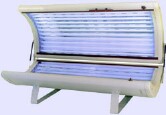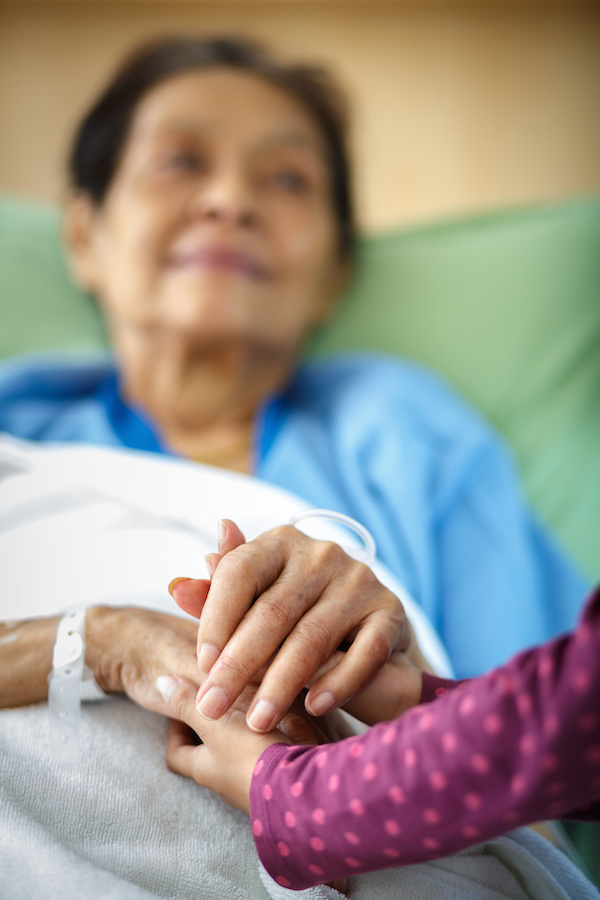
TUESDAY, July 24 (HealthDay News) — Those who bronze themselves in tanning beds face a 20 percent increased risk of skin cancer, and that raised risk reaches 87 percent if they start before they are 35 years old, new research indicates.
The European study also estimates that one in every 20 cases (5.4 percent) of the most lethal form of skin cancer, melanoma, can be attributed to tanning bed use.
“Indoor UV tanning devices are real carcinogenic devices, and people should be advised not to attend indoor tanning parlors or to buy them for private use,” said lead researcher Philippe Autier, director of the International Prevention Research Institute in Lyon, France.
The U.S. Food and Drug Administration is considering a ban on tanning beds for anyone under the age of 18. Bans are already in place in Brazil and New South Wales and the idea is gaining popularity in France, Autier said.
Study co-author Mathieu Boniol, who is also from the International Prevention Research Institute, added that “as the use of these devices produces no positive effect to health, it is now in the hands of policy makers to decide how to manage, minimize or remove this risk.”
The report was published online July 24 in the BMJ.
To determine the relationship between tanning beds and skin cancer, the researchers analyzed 27 studies published between 1981 and 2012. In all, they identified more than 11,000 cases of skin cancer.
This process, called a meta-analysis, attempts to find patterns across several studies to uncover connections between unrelated research.
By pooling the data, the researchers found a 20 percent increased risk of developing cancer for people who regularly used tanning beds, compared to people who never used the devices. The risk rose to 87 percent if one started tanning before 35, and increased almost 2 percent for each additional tanning session noted per year.
Of the almost 64,000 new cases of melanoma in Western Europe each year, more than 3,400 can be blamed on tanning bed use, the researchers calculated. Tanning bed use is also estimated to cause 800 deaths from this deadly cancer annually, the team added.
Since the use of tanning beds is relatively new and there is need for more research, the risk might be even greater, the researchers noted.
Dr. Jeffrey C. Salomon, an assistant clinical professor of plastic surgery at Yale University School of Medicine, said that “this study validates the previous studies and adds new risks to the ever growing knowledge of the downside of tanning beds.”
Parents should not only be concerned about their children using tanning beds, they should avoid using these devices themselves, he said.
“Tanning beds are worse than the sun for risk of melanoma based on these results,” Salomon said. “The risks from tanning beds are real, the untoward results can be dire, and the ultimate solution may require total prohibition.”
Not everyone agrees, however. John Overstreet, executive director of the industry group the Indoor Tanning Association, took exception to the findings.
One cannot compare tanning in Europe to the United States, he said. “Commercial tanning salons in the United States are a different matter altogether,” he said.
“The United States Food and Drug Administration has conducted tests to determine the amount of ultraviolet radiation required to burn persons with a variety of different skin types, and requires that all tanning equipment used in the United States carry labels specifying the recommended exposure times for each skin type, which have been calculated to prevent burning,” Overstreet explained.
Enforcement of the FDA recommendations is left to the individual states, he noted.
“Most states have strict enforcement, requiring on-site records to be kept of each customer session listing name, date of session, skin type, type of equipment used, and length of exposure, so that state inspectors can assure compliance with regulations. Burning of customers in these states is virtually nonexistent,” Overstreet said.
More information
For more information on melanoma, visit the U.S. National Cancer Institute.

